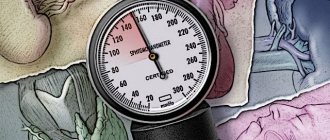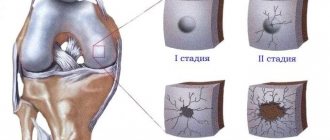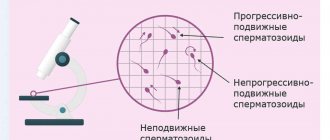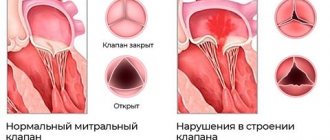Synonyms:
ASL-O, ASLO, Antistreptolysin-O, ASO.
Streptococci are bacteria that, when they enter the human body, produce special enzymes. One of them is streptolysin-O, a protein that destroys red blood cells. It is in response to this that the immune system begins to produce anti-streptolysin-O (ASL-O), which can protect the body from the action of both streptococci themselves and their toxins.
Testing for antistreptolysin-O allows for timely detection of diseases caused by streptococci and their waste products. However, this analysis has the greatest diagnostic value for identifying acute rheumatic fever, since it is one of the laboratory criteria for rheumatism.
General information
Streptococci are divided into groups according to the type of effect and their characteristics. Group A beta-hemolytic streptococcus is the most dangerous, as it is the causative agent of serious pathologies:
- scarlet fever (a highly contagious (infectious) infectious disease);
- glomerulonephritis (damage to the glomeruli of the kidneys);
- tonsillitis and tonsillitis (inflammation of the tonsils);
- erysipelas (skin infection);
- rheumatic fever - rheumatism (inflammation of connective tissue);
- osteomyelitis (purulent-necrotic process in soft tissues, bone and bone marrow);
- bacterial endocarditis (damage to the inner lining of the heart muscle);
- pyoderma (purulent skin lesion), etc.
Different types of toxins released by bacteria cause different pathological symptoms or syndromes. One of these components is the protein streptolysin, which damages red blood cells - erythrocytes. In response to the release of streptolysin, the body secretes antibodies (Anti-streptolysin-O). Their concentration begins to increase 1-5 months after infection with streptococcal infection. The ASL-O indicator returns to normal only after six months to a year.
Additional examinations
A disorder involving high levels of antistreptolysin-O cannot be detected by this test. It allows you to state the existence of a problem, partially assess its stage, but nothing more.
It is necessary to assign a system of measures as early as possible to obtain complete information.
Among the methods, in addition to our own analysis for ASLO, we can name the following:
- Throat swab. Plays a key role, especially in the detection of acute pathological processes. The task is to assess the flora and its sensitivity to antibiotics of specific species.
Several issues are being addressed at once. The first concerns the statement of the existence of a problem, the detection of streptococcus in a smear. The second is determining treatment tactics. Early selection of medications to combat the disorder.
- General blood test. Used to indirectly confirm the presence of a pathological process. The level of leukocytes and ESR increases, and some other indicators may change. This is not so significant. Especially if the patient has already received any treatment before the start of a comprehensive diagnosis.
- Visual assessment of the condition of the pharynx, structures of the upper respiratory tract. It is carried out as part of an initial examination by an ENT doctor. It’s a routine technique, but that doesn’t make it any less important.
- Biochemical blood test.
In addition to those mentioned, those methods are also shown that can specify the condition of the heart and kidneys. To assess complications and immediate possible causes of changes in ASLO levels. ECG, ECHO, ultrasound of internal organs.
Indications
The ASL-O analysis can be deciphered by an immunologist, an infectious disease specialist, as well as any general practitioner (general practitioner, pediatrician, family doctor, etc.).
The following reasons may be indications for analysis:
- Recurrent diseases of the heart, kidneys, joints and nervous system (mainly in children);
- Diagnosis of rheumatism - an acute form of rheumatic fever;
- Monitoring the effectiveness of antistreptococcal therapy;
- Monitoring the treatment of purulent-inflammatory pathologies;
- A prolonged increase in temperature in a patient for no known reason;
- Diagnosis of chronic diseases.
Important! Diseases caused by group A streptococcus often cause serious complications in internal organs (heart, liver, kidneys), joints, bone and nervous systems. And since the concentration of ASL-O increases only a few weeks after infection with a streptococcal infection, this study allows us to identify only the relationship between residual symptoms and the activity of bacteria in the body. Thus, analysis for ASL-O makes it possible to predict and prevent the development of severe complications.
Reasons for increasing ASLO
{banner_banstat3}
Among the factors in the development of the disorder are the following:
Acute tonsillitis
{banner_banstat4}
Oropharynx lesions by pyogenic flora are the most common reason why ASLO is elevated in the blood. It occurs in both sexes, regardless of age. Another name for the disorder is sore throat.
The critical phase is characterized by a dangerous course. Complications from the heart and respiratory system are possible.
Attention:
If treatment is not timely, the disease enters the chronic stage and cannot be completely cured.
Acute pharyngitis
{banner_banstat5}
Inflammatory lesions of the velopharyngeal arch occur as a cause of increased antistreptolysin O no less often. The process is accompanied by a lot of extremely uncomfortable symptoms.
Symptoms include: severe, raw pain in the throat, disturbances in the swallowing process, choking, swelling, cough without producing a large amount of sputum, increased body temperature and, accordingly, signs of general intoxication of the body.
Attention:
It is urgent to begin treatment, since the process is prone to early chronicity.
Glomerulonephritis
{banner_banstat6}
Autoimmune inflammation. In this case, it involves the renal structures. It almost always has an extremely unfavorable course.
Accompanied by a gradual or rapid change in the function of the paired filtering organ. Dysuric disorders are also observed.
An increase in the frequency of urination, and then a drop in the amount of urine per day, a change in the shade of the discharge, and other phenomena. Without quality therapy, kidney failure cannot be avoided.
Rheumatoid arthritis
Another form of an autoimmune pathological process. As the name suggests, this is a joint disorder.
Usually the first symptoms are severe pain in large structures of the musculoskeletal system. Small ones are left “for later”, and a complex lesion occurs.
Without therapy, there is a high probability of disability as a result of loss of motor activity of the limb that has undergone changes.
Rheumatism
{banner_banstat7}
In the vast majority of cases, it is characterized by autoimmune damage to the myocardium and is accompanied by an increase in the concentration of antistreptolysin in the blood. It poses a great danger to life; without therapy, it is practically impossible to avoid chronic heart failure.
Systematic maintenance treatment is required under the supervision of a specialist of the same name. Rheumatologist.
Skin variants of streptococcal infection
Observed as a primary or secondary lesion. Externally, the process looks like a single focus of ulcerative changes in the dermis. With the formation of a defect, an area of tissue destruction.
At the initial stage, a red spot of small diameter (up to several centimeters) appears. Then new ones may arise, merging into a single focus.
Ultimately, rough scarring is observed with the formation of a large crust (eschar).
Without quality treatment, a cosmetic defect is likely to develop or the process will further expand. The name of the disorder is streptoderma. It is possible to develop multiple rashes without tissue ulceration.
Lesions of the central nervous system
{banner_banstat8}
Relatively rare. Usually due to a weakened immune system. It manifests itself as meningitis, an inflammatory lesion of the meninges.
The reasons for the increase in antistreptolysin-O in adults are mainly associated with previously acquired otolaryngological processes; spontaneous damage without any symptoms is less common. The so-called carrier state, which a person may not even be aware of.
Norms of antistreptolysin-O
| Patient age | ASL-O indicator, U/ml |
| 2 days – 7 years | less than 100 |
| 7 – 14 years | less than 250 |
| Over 14 years old | less than 200 |
Note: The peak concentration of ASL-O is reached no earlier than 1-1.5 months after the start of their production. It should also be taken into account that antibodies remain in the patient’s blood for several months.
Factors of influence
- A false positive result is possible in healthy people who themselves are carriers of group A streptococcus.
- Tests performed on patients with liver disease give false positive results.
- A false negative result can be obtained by taking antibiotics and anti-inflammatory drugs (Coldrex, ibuprofen, aspirin, etc.), steroids and corticosteroids, as well as hormones.
- A false negative result is possible in the very early stages of streptococcal infection (up until the maximum concentration of ASL-O is reached).
With local infection of the skin by streptococci, a high level of antibodies is detected only in 1/4 of all cases. Additionally, a test for antibodies to deoxyribonuclease B (anti-DNase B) is prescribed.
Preparing for a visit to the laboratory
To obtain the most accurate results, donating blood for ASLO requires preparation:
- Last meal 8 hours before;
- After undergoing antimicrobial or antibacterial therapy, at least 3 weeks must pass;
- Limit medication intake on the eve of blood donation;
- Within 24 hours, reduce sweet, salty, spicy, flour and meat from the diet;
- Stop drinking alcohol within 7 days
- To monitor the dynamics of the development of the disease, blood donation for ASLO is carried out 2 times with a break of 7 days, that is, 1 time per week.
Increasing ASL-O
An increase in the concentration of antistriptolysin-O is observed in the following diseases:
- angina;
- tonsillitis;
- endocarditis;
- rheumatism;
- pyoderma;
- osteomyelitis;
- reactive arthritis;
- scarlet fever;
- glomerulonephritis;
- erysipelas.
Note : determination of the ASL-O indicator is necessary for diagnosing streptococcal infection during remission. However, the analysis is not informative enough, since an increase in the level of ASL-O antibodies in patients is possible only in 75% of cases. Therefore, diagnosis in the presence of certain symptoms characteristic of streptococcal diseases is necessarily supplemented by other laboratory tests.
An excess of ASL-O concentration by 3-4 times may indicate a recent illness caused by streptococcus.
Important! A high concentration of antibodies in pregnant women does not affect the formation and development of the fetus, the course of pregnancy or the general well-being of the expectant mother.
Interpretation of results and presumptive diagnoses
{banner_banstat2}
Doctors have the opportunity to examine changes and suggest a particular diagnosis based on the nature of the deviations in the level of antistreptolysin-O.
The following probable finds are identified:
- Increasing concentration by 4-6 times. Accompanies an infection suffered in the recent past. This is the period following the acute condition. With systematic treatment, the numbers are approximately at the same level, only the time they remain is different.
- An increase in ASLO by 1.5-2 times means chronic infectious and inflammatory processes. There is a constant, recurrent course of the disorder or carriage of streptococcus. Depending on the results of other studies, doctors decide on treatment tactics.
- Absence of any dynamics in the concentration of antistreptolysin-O for at least 6 months. Speaks of the development of an autoimmune secondary lesion. This is usually rheumatism or arthritis of non-septic origin. Targeted diagnostics are required.
With all that said, normal levels do not indicate the absence of an infectious disorder.
Attention:
It is necessary to conduct the study several times with an interval of a couple of weeks to obtain dynamic results and a complete picture of the pathological process.
But even this does not guarantee a clear outcome. Since in approximately 10-30% of situations there are no deviations for a long period of time, even with an active infection.










